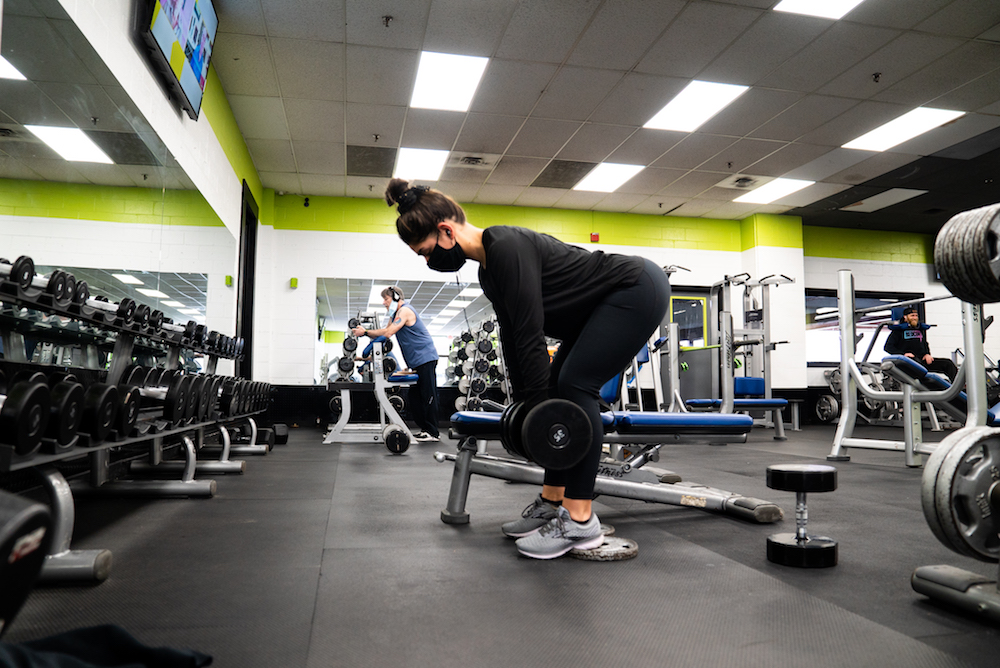Proper form is essential when using free weights. Without proper form you may not get all the benefits of the lift you’re doing (if you’re gonna spend the time working out, you should want to get as much out of it as you can) and it may lead to injuries. Injuries can mean you have to take time off from the gym to let yourself heal, setting back your progress. Not everyone has a personal trainer or good friend by their side to check their form, so let’s discuss five full body checkpoints for weight lifting that you can check on your own.
Neck alignment
Many people like to watch themselves in the mirror when they work out. While this is useful for a quick form check, there’s no need to stare at yourself the entire lift. Depending on the exercise you’re doing, when you watch yourself in the mirror, this can mean that your head is tilted up. Your neck is an extension of your spine, so it’s important to keep it in line with the direction of the rest of your spine. This may mean focusing your gaze forward or slightly down.
Shoulders pulled back and down
Common when performing pulling motions (i.e. back rows), people will hike their shoulders up toward their ears when they pull. This activates the upper trapezius muscle which isn’t the target of this exercise. Instead, focus on pulling your shoulder blades together and be sure that you’re not driving your shoulders up toward your ears. “Down and back” is a common cue for most pulling motions (deadlifts, pull ups, rows, pull downs, etc.).
Neutral pelvis or pelvis “tucked”
Neutral pelvis means that there’s no arch in your lower back. Oftentimes during lifts people will arch their low back which puts the body in a weak position and can lead to back injuries. By ensuring that the pelvis is neutral or tucked forward, the core will be engaged which protects the low back. This is especially important for overhead lifts, like the overhead press. But it’s also important for lifts like the bent-over barbell row. Core engagement is essential for safety and performance. Use this checkpoint to make sure that the core stays engaged.
Knee position
Knee position is important for lower body exercises like lunges and squats. A common problem for people, especially during squats, is that their knees will cave in. Not only is this a dangerous position for the knee but it’ll make the exercise less effective as well. During the squat, the feet should be shoulder width or a little wider with the toes pointed slightly out. Think “knees wide” during the movement if you’re someone who’s knees often cave in. Try to keep your knees in alignment with your second and third toes. The visualization can help. You can also try using a loop band right above your knee joints that will remind me to keep your knees out and help strengthen the muscles involved in doing that.
Weight distribution in your feet
Weight should be kept in your heels during exercises like the squat, lunge, split squat, bridge or hip thrust, and step up. By pushing through your heel you engage your glutes and hamstrings. It’s important to not accidentally come onto your toes during these exercises. Other exercises- like the overhead press, deadlift, or bent over row- weight should be evenly distributed on all sides of your feet to provide good balance.
Performing free weight exercises properly requires good focus and attention. During your next weight training session, start each exercise by doing a full body check to make sure each checkpoint is in proper position. Keep this focus throughout each set and see how that can improve your workout. Mirrors are helpful if you’re working out on your own, but if you have a gym partner, friend or personal trainer ask them if they can help!


